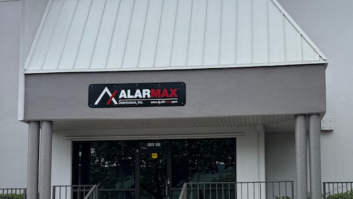Recent fortunes of Circuit City and Best Buy may be headed in different directions, but both big-box CE chains and all specialty CE dealers in general are staring into a future with declining margins and a mass-market onslaught pushing into the flat-panel TV space, Matthew Fassler, Goldman Sachs managing director, told attendees at the recent DisplaySearch U.S. Flat Panel Display Conference, here.
Issuing “the Wall Street view” of CE retailers, Fassler called the financial status of “the two largest CE specialty retailers” — Circuit City and Best Buy — “a tale of two companies,” labeling Best Buy a “best-in-class operator in a challenging industry,” while Circuit City was said to be “coping with some very serious execution challenges.”
“The macro backdrop for consumer spending is challenging, and we are certainly seeing some very tough numbers out there as we speak,” Fassler said, adding that income growth is likely to slow through 2008, although some potential salvation may be on the way.
“It is my view that [$100 billion in] fiscal stimulus will help both the broader economy and this category in the second half of this year. The numbers that we are seeing today, all things being equal, should be the trough numbers that we see for this cycle,” he said.
Fassler observed that product cycles are somewhat challenging this year because “there are no clear, distinct value drivers the way there’s been over the past couple of years.”
Looking at Best Buy’s estimated sales growth for 2007, Fassler said the video category is basically flat at 33 percent.
“Once you got past the middle of the year, you would not be able to tell that we were in a strong product cycle for flat-panel TVs, judging by Best Buy’s numbers,” Fassler said. “But we don’t see TV being the incremental problem in the next fiscal year.”
“We think audio is going to be a bigger drag as we continue to see MP3 players decline and we see ongoing drag from home audio,” Fassler continued. “We think the PC business had an excellent year, particularly in notebooks, certainly for Best Buy and most of the consumer channel in 2007. We think that that moderates in 2008. Probably the biggest source of deceleration is video gaming hardware, which will start to moderate as we cycle the releases of multiple major platforms and also start to see price cuts for some of those platforms. For Best Buy, we have a pretty generous estimate for major appliance sales.”
Fassler estimated Best Buy’s same-store sales growth going from 2 percent in nominal turns down to 1 percent.
He stressed that the industry is “on the cusp of a mass market onslaught. That’s not necessarily a bad thing for the production front, but it does raise challenges for the specialty [retail] players.”
“It’s tough to cope with secular gross-margin pressure in the category both from a product perspective and from a competitive perspective,” Fassler said.
“In TV, once you pass a given point of penetration you are unlikely to see any individual electronics product category regain terrific sales momentum,” Fassler said. “Year-end 2007 we were at 42 percent penetration for DTV, heading up to 59 percent, we think, by the end of the current year. One of the things we saw is that once you hit 20 percent penetration you are never going to see the sort of revenue growth renaissance that you had hoped for.
“You are going to track basically an average flat industry down [from a dollars standpoint]. You can see some pops in the revenue trend but not to the point where these categories are going to carry your business and drop unusual growth in excess of GDP. It’s not that you can never recover, but it is a lot less common and a lot less likely. I would say that this trend is all the more so true for some of the specialty players who tend to do well earlier in a product cycle,” he said.
Meanwhile, Fassler said Wal-Mart has vastly improved its flat-panel TV merchandising departments in many of its stores, adding such high-end tier one brands as Samsung and Sony as well as newcomers such as Vizio. The chain is building “an assortment that you could start to say is reasonable,” he said. The revamped departments will spread to most if not all Wal-Mart stores in 2008.
“Best Buy I would say is currently comping negative in flat-panel TV, while Wal-Mart is comping positive in flat-panel TV,” Fassler said. “Clearly there is the beginning of a market share shift here, which for specialty retailers doesn’t bode all that well.”
While Best Buy is best in class among specialty chains, Fassler said he has “a couple of concerns from a stock perspective that keeps me on the sidelines.”
He estimated Best Buy will be reporting a 1.5 percent decline in same-store sales for the quarter ending in February.
First, he said, the company is “carrying peak margins into the mass market onslaught.” Second, he said that Best Buy is diversifying to a great degree, entering multiple international markets, and placing focus on customer centric segments such as Best Buy for Business and Geek Squad.
“These are all symptomatic of Best Buy’s strength and capacity to manage different businesses but the challenges are that A) no one has infinite capacity, and B) there are enough of these initiatives today that it will be hard for any one to pull though,” Fassler said.
He added that Best Buy is investing “at a surprisingly rapid rate, with square footage accelerating from 2005, 2006 and 2007, and most likely through 2008.”
Companies with 20 percent market share, he pointed out, risk diminishing returns when they start growing from that level.
Meanwhile, Circuit City, he said, “showed the biggest profit surprise in a generation.”
“We entered the year expecting Circuit City to turn a decent profit,” Fassler said. “This year its operating margin — earnings before interest and taxes — is going to be greater than 3 percent negative. That is an astounding number, which I think calls into some question the viability of the company’s business model.”
He acknowledged that the problems were “somewhat self inflicted” from the company trying to execute many changes across its business model at a time when the environment got a lot tougher, “but the issues were a bit bigger, including poor warranty attachments.













